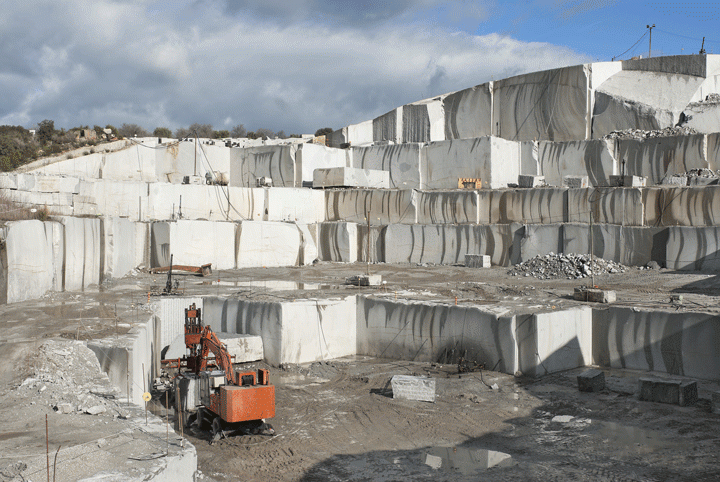A Journey With Granite Quarries in South Africa: Introduction Nature's Creativity
A Journey With Granite Quarries in South Africa: Introduction Nature's Creativity
Blog Article
Unearthing the Rich Background and Lasting Practices of Granite Quarrying
As we depend on the precipice of revealing the intricate tapestry of granite quarrying, a journey via time reveals not just the physical act of removing stone yet additionally the cultural and historical relevance woven into the really material of this technique. From the ancient origins that laid the foundation for modern-day quarrying methods to the lasting methods that are forming the future of this sector, each chisel mark on granite surface areas narrates waiting to be uncovered (granite quarries in south africa). The heritage of granite quarrying extends far beyond simple extraction; it is a testament to human resourcefulness, durability, and the enduring attraction of this magnificent rock
Ancient Origins of Granite Quarrying
Dating back to old people, the method of quarrying granite has been an important part of human background and architectural advancement. The earliest evidence of granite quarrying go back to old Egypt, where large pyramids and intricate sculptures were crafted from this durable stone. The Egyptians made use of primitive devices to draw out granite blocks from quarries, showcasing the significance of this product in their significant buildings.
Progressing in background, the Greeks also made substantial contributions to the quarrying of granite. The Greeks utilized granite in numerous architectural marvels, such as temples and statues, demonstrating their skill in shaping and sculpting this sturdy stone. The Romans better fine-tuned the techniques of quarrying granite, employing advanced tools like blades and hammers to essence and form granite for their iconic structures.
Through the centuries, the practice of quarrying granite has advanced, with modern technologies boosting efficiency while preserving the timeless allure of this natural stone - granite quarries in south africa. From ancient worlds to modern building contractors, the heritage of granite quarrying continues to form our globe
Development of Quarrying Techniques
The development of quarrying strategies has been noted by a continuous progression in the direction of better efficiency and accuracy in drawing out granite. From the fundamental methods utilized by our ancestors to the sophisticated modern technologies made use of in contemporary quarrying procedures, the sector has actually undergone substantial advancements. Early quarrying techniques involved manual labor with fundamental tools such as chisels, hammers, and wedges to extract granite blocks from the planet. As human beings proceeded, methods like fire-setting and primitive dynamites were introduced to help with the extraction process.
In more recent times, the introduction of equipment revolutionized the quarrying industry, allowing quicker extraction rates and raised performance. Technologies such as diamond wire saws, high-pressure water jets, and pneumatically-driven drills have come to be basic in modern-day quarries, enabling exact cutting and reduced waste. Improvements in computer-controlled equipment and 3D modeling have maximized quarrying procedures, leading to minimal ecological effect and improved sustainability practices. As the demand for granite continues to rise, the advancement of quarrying methods stays indispensable to meeting market requires successfully and sustainably.
Cultural Relevance of Granite
Granite holds an extensive cultural importance across various people due to its long-lasting presence in architectural masterpieces and revered monoliths. From the majestic pyramids of Egypt to the intricate carvings of the Angkor Wat holy place in Cambodia, granite has been a product of selection for sharing splendour and longevity in cultural heritage. In ancient Rome, granite columns decorated holy places and public structures, representing stamina and see it here durability. The social importance of granite expands beyond its physical attributes; it embodies durability, stability, and eternity, making it a symbol of enduring heritages and practices.

Lasting Practices in Quarrying
Amidst the abundant background of granite quarrying and its social importance exists an expanding emphasis on lasting practices within the industry. As ecological understanding and problems concerning resource exhaustion have actually enhanced worldwide, the quarrying market has significantly welcomed lasting techniques to lessen its influence on the atmosphere and surrounding neighborhoods.

Moreover, reclamation and rehab of quarry sites post-extraction are indispensable to sustainable techniques. By bring back quarried areas to an all-natural or beneficial state, such as creating wild animals habitats or entertainment rooms, quarriers can offset the environmental footprint of their operations and add favorably to the local environment.
Legacy of Granite Quarrying
With a historical backdrop steeped in workmanship and commercial development, what withstanding influence has granite quarrying left on the landscape of modern-day culture? The legacy of granite quarrying transcends mere extraction methods; it has shaped architectural marvels, city landscapes, and social heritage worldwide. The long lasting nature of granite has made it a recommended selection for monoliths, buildings, and framework, standing as a testament to the skill and artistry of quarry workers across generations.
Furthermore, the economic impact of granite quarrying can not be neglected. The sector proceeds to give job opportunity and drive local economic situations in regions where granite extraction is widespread. It has actually likewise stimulated technological advancements in quarrying strategies and devices, resulting in much more efficient and sustainable methods.
In regards to sustainability, the legacy of granite quarrying consists of efforts to mitigate environmental impacts with recovery jobs and responsible source management. By balancing financial passions with environmental stewardship, the sector aims to guarantee that future generations can continue to profit from this enduring natural deposit.
Conclusion

Report this page